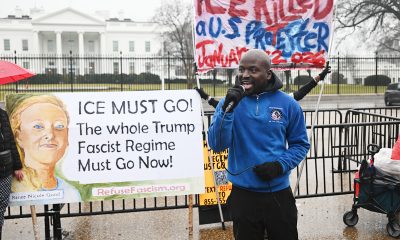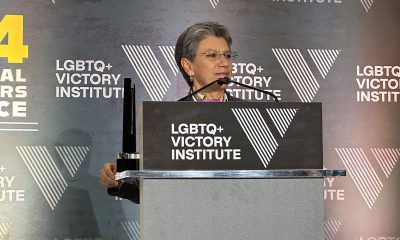a&e features
Blade’s 50-year history reflects struggles, advances of LGBT community
‘Paper of record’ chronicled police entrapment and blackmail, AIDS epidemic, marriage
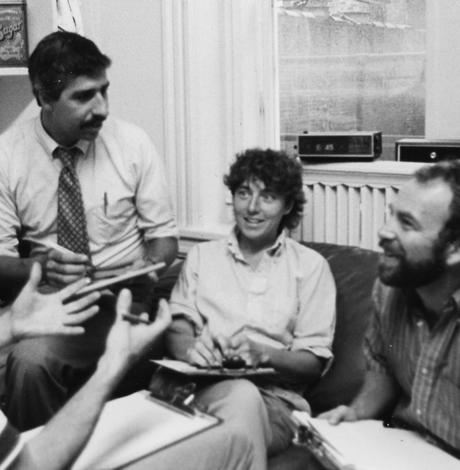
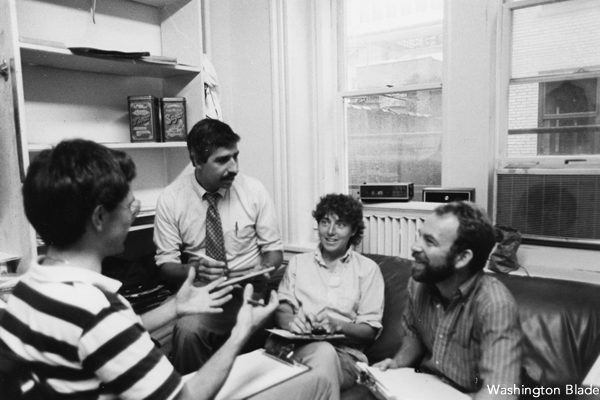
In its 50-year history, the Washington Blade has covered news for the LGBT community that has reflected dramatic advances as well as struggles ranging from workplace discrimination and attempts at blackmail to the AIDS epidemic and the achievement of marriage equality, establishing the Blade’s reputation as the LGBT newspaper of record.
In its very first issue in October of 1969 as a one-page monthly newsletter called “The Gay Blade,” the paper reported on the 1960s era fear of blackmail and the possibility of being fired from a government job because of one’s sexual orientation.
“Warning to Dupont Circle people,” the first issue states in its third story. “Cars seen too frequently in the Circle area are having their license numbers taken down; their owners later are being harassed and blackmailed.”
That same first issue included articles on pioneering gay rights activist Frank Kameny being available to provide help for gays or lesbians subjected to a security check by their employer, the formation of the Gay Liberation Front in New York City, and the launching by the Gay Blade of a gay roommate referral service.
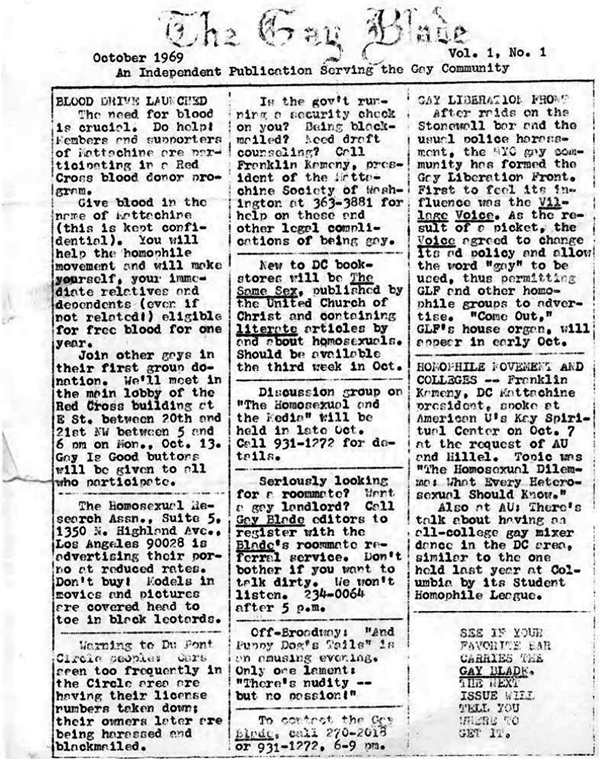
Fifty years later, the now weekly Washington Blade has a correspondent accredited to cover the White House and presidential news conferences and an editor-reporter who frequently travels abroad to cover international LGBT news.
Since September 1995, the Blade has been available online through its website, enabling it to publish breaking LGBT news on a daily and even an hourly basis.
The Blade’s founding editors in October 1969 were Nancy Tucker, a lesbian, and Bart Wenger, a gay man who at the time went by the name Art Stone. Both had been members of the Mattachine Society of Washington, the first D.C. gay rights organization of note co-founded by Kameny.
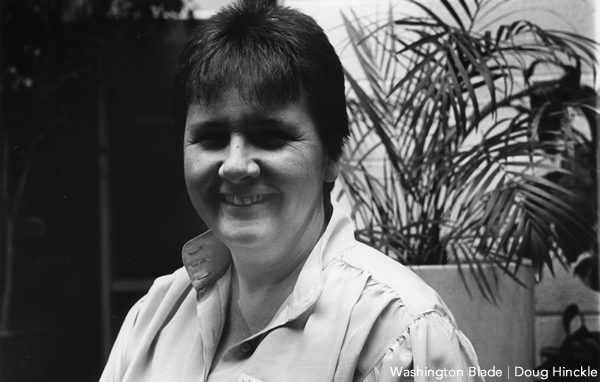
Tucker and Wenger have said in subsequent years that although they supported the work of the Mattachine Society, they wanted to launch, four months after the Stonewall riots in New York, an independent news publication to provide needed information for D.C.’s then fledgling gay rights movement.
It was Kameny, Tucker told the Blade years later, who convinced her to help produce the new publication.
“It filled a clear need right from the get-go – and it has been that way ever since,” Kameny recalled in an October 2009 interview with the Washington Blade, two years before his passing in 2011.
Tucker, who later moved to Albuquerque, N.M., has said several people were involved in producing the Blade’s first issue, including Martha Taylor, her partner at the time, who operated a mimeograph machine that printed the first 500 copies of the paper.
But she said many of the people that helped produce and distribute the first issue and the next few issues withdrew from participation a short time later, leaving only a small “staff,” all of whom were volunteers.
“It eventually came down to my doing all of the writing, most of the news work, some of the distribution, all of the advertising selling – and Bart did some of the distribution and let me know what news tips that he came up with,” Tucker said.
She said she knew the Blade was becoming influential because LGBT people were using the Blade to publicize the activities of their organizations or businesses.
“I have a profound belief that it contributed to really the creation of the gay community in Washington,” Tucker said. “It helped publicize various bars and businesses and stuff as they opened.”
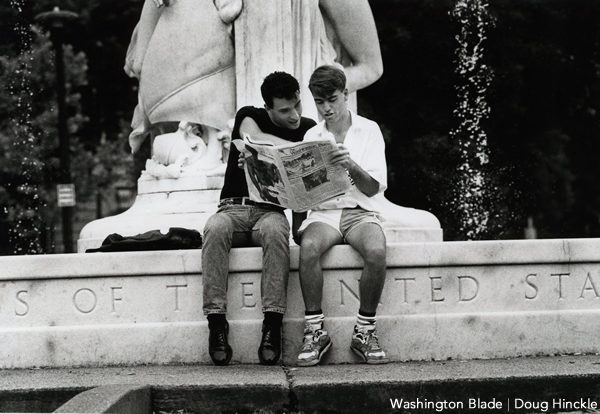
In July 1973, Tucker announced she was stepping down from her role as editor and publisher of the Blade and issued a call for interested parties to assume control of the then newsletter. Lesbian activist Pat Price, who used the pseudonym Pat Kolar, answered that call and became the new editor and publisher.
Although she and others who began to write for the Blade used pseudonyms, their names appearing in the paper marked the first time stories contained bylines. A little over one year later in November 1974 the Blade ended its newsletter size page and began publishing as a standard tabloid format on newsprint paper. Also in November 1974 the paper moved into its first offices at 1724 20th St., N.W. in Dupont Circle.
In December 1974, Joseph Crislip, who began writing for the Blade one month earlier under the pseudonym Christian Deforrest, assumed the position of Blade editor and “coordinator” of its business operations. In November 1975, under Crislip’s leadership, the Gay Blade officially changed its name to the Blade and incorporated as a nonprofit corporation called Blade Communications, Inc.
In early 1977, shortly after the Blade had moved to a two-room suite on the 2400 block of Pennsylvania Avenue, N.W, a gay activist who had recently moved to D.C. from Buffalo, N.Y. named Don Michaels showed up at a Blade volunteer meeting. It was the start of Michaels’ 24-year association with the Blade in which he would eventually become publisher and oversee the Blade’s growth in size and status to become one of the nation’s major LGBT publications.
According to a detailed account of the Blade’s history by D.C.’s Rainbow History Project, in 1978 Michaels became managing editor while Crislip retained the position of publisher. That same year, in November, the Blade changed from operating as a monthly to a bi-weekly newspaper in response to the growth in its readership and advertising.
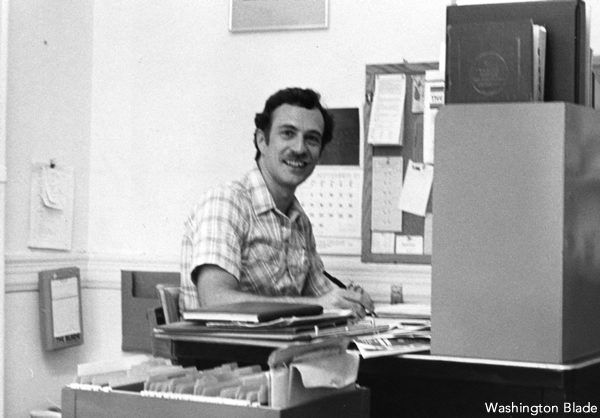
In October 1980, the Blade reincorporated into a for-profit, employee-owned business and changed its name to the Washington Blade. By early 1982 Michaels assumed the position of publisher succeeding Crislip, and as the paper continued to grow, the decision was made to become a weekly. Steve Martz, who joined the Blade a few years earlier in the advertising department, became managing editor and Lisa Keen, who started at the Blade in 1979 as a freelance reporter, became assistant editor.
From several years prior to that time up until 2001, the Blade had moved to several different locations, including 930 F St., N.W., an office building that became home on its first floor to the 9:30 Club; and later to a small office building at 724 9th St., N.W. It was during that time, around 1984 that Martz left the Blade and Keen assumed the role as top editor, which eventually was given the title of executive editor while Michaels continued as publisher.
In 1992, the Blade moved to 1408 U St., N.W., in the city’s newly developing “U Street corridor” that quickly evolved into an entertainment district. One year later, in April 1993, coinciding with the 1993 LGBT March on Washington that brought tens of thousands to the nation’s capital, the Blade published its largest issue to date, containing 216 pages.
In 1995, the Blade launched its website, WashingtonBlade.com, further expanding its ability to cover breaking LGBT news on a daily basis.
In May 2001, a gay-owned media company named Window Media that also owned the Southern Voice LGBT newspaper in Atlanta, purchased the Blade. William Waybourn, one of its principal owners, became the Blade’s new publisher and Chris Crain, another Window Media owner, became the Blade’s executive editor.
Michaels, Keen, and others on the Blade’s editorial and management leadership team left the Blade at the time of the sale. In 2006, Waybourn and Crain left the Blade to pursue other endeavors.
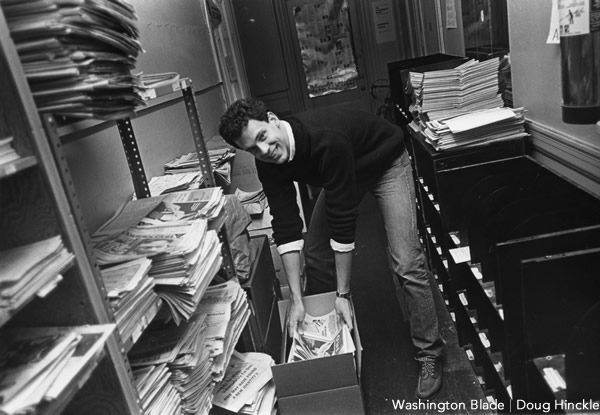
Crain was succeeded as executive editor by Kevin Naff, who remains the Blade’s editor today. In December 2007, Lynne Brown, who had worked for many years on the Blade’s advertising team, was named Blade publisher.
“It’s been a privilege to edit the Blade and help preserve its legacy of quality journalism as we’ve navigated the challenges facing the entire newspaper industry,” said Naff.
The Blade relocated from U Street to the National Press Building at 14th and F Street, N.W. in February 2008, bringing it to a location where many of the nation’s most prestigious news media outlets had their Washington news bureaus.
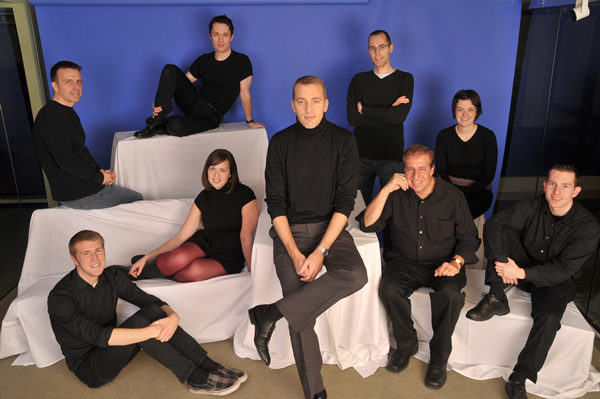
But less than two years later, in November 2009, Window Media’s parent company filed for Chapter 7 bankruptcy, resulting in the shutdown of the Blade and the other LGBT publications owned by Window Media. However, just four days later, the Blade’s staff, which banded together as volunteers, took the extraordinary step of creating a temporary replacement for the Blade called the D.C. Agenda and published its first issue.
Through financial support from loyal advertisers and readers, the former Blade staffers continued to publish the D.C. Agenda as a weekly placeholder until former publisher Brown, former editor Naff, and the Blade’s former advertising executive, Brian Pitts, formed a business partnership that purchased the Blade’s assets from the bankruptcy court.

The three partners created a new parent company, Brown Naff Pitts Omnimedia, and relaunched the Washington Blade brand in April 2010. The new company opened its offices at 1712 14th St., N.W., the Blade’s current headquarters.
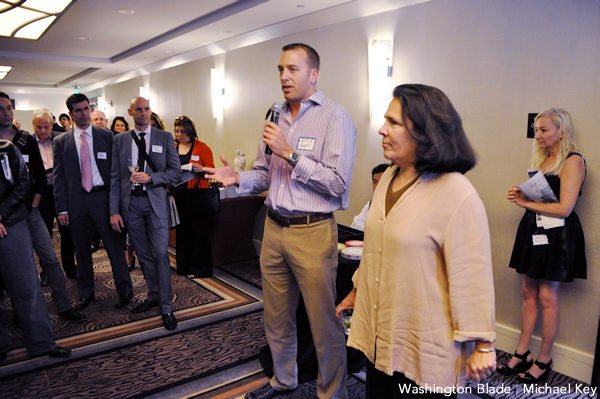
In October 2010, the Washington Blade Foundation, a new 501(c)3 nonprofit organization, was formed to raise money to digitize the full Blade archives. In January 2011, Brown Naff Pitts Omnimedia launched a new business unit, Azer Creative as a boutique marketing firm. And in March 2017, BNPO launched the Los Angeles Blade, a sister LGBT newspaper headed by publisher Troy Masters and veteran journalist Karen Ocamb as news editor.
Recollections by former Blade leaders
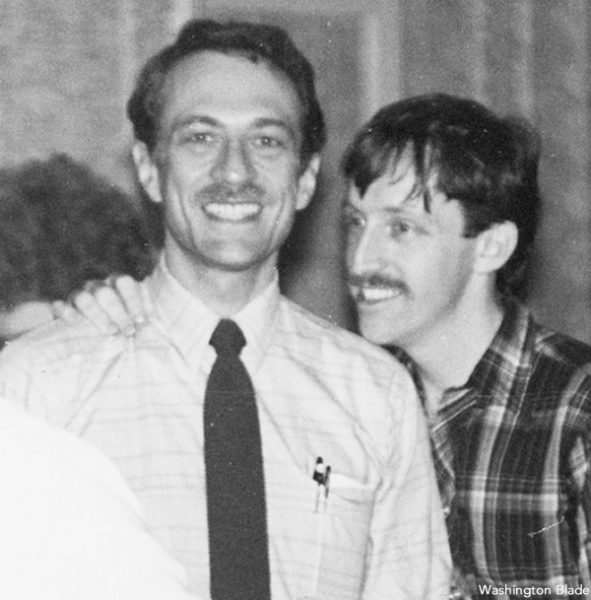
“I still live in D.C. and treasure a 45+ year relationship with John Yanson, who in the early days of the Blade was the staff photographer,” Michaels said when asked what he’s been doing since leaving the Blade. He and Yanson also spend time in San Diego, Calif., where they own a condo, he said.
Michaels was quick to reply to the question of what he most remembers about the Blade during his years working there.
“How eager our community was for a publication that focused on news and features rather than sexually oriented content,” he said. “Our approach attracted many really dedicated staffers who worked hard and tirelessly to make the paper grow from those 24-page monthly editions way back when into a well-regarded weekly newspaper of record.”
Keen, who had worked on the Blade staff for 20 years before leaving in 2001 as executive editor, said her years at the paper left a lasting impression.
“I remember a team of really dedicated colleagues and intensely loyal readers,” she said. “Don Michaels articulated a vision of the paper as one that would strive to meet professional standards and serve the LGBT community,” said Keen.
“People who joined the staff shared that vision and commitment at a time when working at a ‘gay paper’ was very likely to diminish one’s future employment prospects,” she said. “They were courageous and tough as nails, fun and funny, talented and reliable.”
Keen said she and her spouse, Sheilah McCarthy, currently live in Wellesley, Mass., where Keen has been covering national legal and political news for several LGBT news outlets around the country, including her own KeenNewsService.com. The couple is raising a 15-year-old son, Sam Keen.
Former publisher Waybourn said he and his partner maintain a D.C. residence but spend most of their time in Virginia’s Shenandoah Valley. They own several businesses, including the Long View Gallery in D.C.
“It was a great time to be involved in D.C. media,” Waybourn said in discussing his tenure at the Blade. “I loved working with the staff and individuals I met through community groups and organizations, and still maintain friendships with the individuals I met through the Blade.”
Crain, the former executive editor, said he and Waybourn “look back with great pride” on the years the two worked at the Blade. He said their acquisition of the Blade in 2001 through Window Media took place “at the height of prominence in LGBTQ media” and enabled them to work with “a wonderful and talented staff to expand the paper’s local coverage, improve its production quality, grow its advertising base and dramatically increase its presence on the internet.”
Crain said by the mid-2000s the Blade was “facing the same challenge as print publications everywhere” such as the loss of classified advertising to the internet. But he said the Blade nevertheless remained profitable, even at the time after he and Waybourn left and the Window Media parent company declared bankruptcy.
“We were greatly pleased that the staff took up the mantle to carry on the Blade’s rich history, and we join in celebrating this terrific milestone,” Crain said.
a&e features
Queer highlights of the 2026 Critics Choice Awards: Aunt Gladys, that ‘Heated Rivalry’ shoutout and more
Amy Madigan’s win in the supporting actress category puts her in serious contention to win the Oscar for ‘Weapons’

From Chelsea Handler shouting out Heated Rivalry in her opening monologue to Amy Madigan proving that horror performances can (and should) be taken seriously, the Critics Choice Awards provided plenty of iconic moments for queer movie fans to celebrate on the long road to Oscar night.
Handler kicked off the ceremony by recapping the biggest moments in pop culture last year, from Wicked: For Good to Sinners. She also made room to joke about the surprise hit TV sensation on everyone’s minds: “Shoutout to Heated Rivalry. Everyone loves it! Gay men love it, women love it, straight men who say they aren’t gay but work out at Equinox love it!”
The back-to-back wins for Jacob Elordi in Frankenstein and Amy Madigan in Weapons are notable, given the horror bias that awards voters typically have. Aunt Gladys instantly became a pop culture phenomenon within the LGBTQ+ community when Zach Cregger’s hit horror comedy released in August, but the thought that Madigan could be a serious awards contender for such a fun, out-there performance seemed improbable to most months ago. Now, considering the sheer amount of critics’ attention she’s received over the past month, there’s no denying she’s in the running for the Oscar.
“I really wasn’t expecting all of this because I thought people would like the movie, and I thought people would dig Gladys, but you love Gladys! I mean, it’s crazy,” Madigan said during her acceptance speech. “I get [sent] makeup tutorials and paintings. I even got one weird thing about how she’s a sex icon also, which I didn’t go too deep into that one.”
Over on the TV side, Rhea Seehorn won in the incredibly competitive best actress in a drama series category for her acclaimed performance as Carol in Pluribus, beating out the likes of Emmy winner Britt Lower for Severance, Carrie Coon for The White Lotus, and Bella Ramsey for The Last of Us. Pluribus, which was created by Breaking Bad’s showrunner Vince Gilligan, has been celebrated by audiences for its rich exploration of queer trauma and conversion therapy.
Jean Smart was Hack’s only win of the night, as Hannah Einbinder couldn’t repeat her Emmy victory in the supporting actress in a comedy series category against Janelle James, who nabbed a trophy for Abbott Elementary. Hacks lost the best comedy series award to The Studio, as it did at the Emmys in September. And in the limited series category, Erin Doherty repeated her Emmy success in supporting actress, joining in yet another Adolescence awards sweep.
As Oscar fans speculate on what these Critics Choice wins mean for future ceremonies, we have next week’s Golden Globes ceremony to look forward to on Jan. 11.
a&e features
Looking back at the 10 biggest A&E stories of 2025
‘Wicked,’ Lady Gaga’s new era, ‘Sexy’ Bailey and more

Although 2025 was a year marked by countless attacks on trans rights and political setbacks, the year also saw brilliant queer artists continuing to create art. From Cannes and Sundance Award winners now vying for Oscar consideration to pop icons entering new stages of their careers, queer people persevered to tell their stories through different media.
With the state of the world so uncertain, perhaps there’s no more vital time to celebrate our wins, as seen through some of this year’s top pop culture moments. While there’s no collection of 10 stories that fully encompass “the most important” news, here are some events that got the gays going:
10. ‘Mysterious Gaze of the Flamingo’ wins big at Cannes

The Cannes Film Festival has become a crucial start for films hoping to make their way to the Oscars, and first-time director Diego Céspedes won the top Un Certain Regard prize for his intimate western “The Mysterious Gaze of the Flamingo.” The film is set in the ‘80s and is intended as an allegory for the AIDS epidemic. Seeing a film that unpacks vital queer history win one of the most coveted awards at Cannes has been a huge point of pride in the independent filmmaking community.
Since the film bowed at Cannes, it has been selected as Chile’s Oscar entry in the Best International Feature race. Speaking with The Blade during the film’s AFI Fest run in October, Céspedes said: At first, I was kind of scared to have this campaign position in the times that we’re living [in] here. But at the same time, I think the Oscars mean a huge platform — a huge platform for art and politics.”
9. ‘The Last of Us’ returns for an even gayer season 2
While the first season of The Last of Us gave us one of TV’s most heartbreaking queer love stories in the episode “Long, Long Time,” Season 2 doubled down on its commitment to queer storytelling with the blossoming relationship between Ellie (Bella Ramsey) and Dina (Isabela Merced). The show expanded on the pair’s relationship in the original video game, making it perhaps the central dynamic to the entire season. That unfortunately came with more homophobic backlash on the internet, but those who checked out all the episodes saw a tender relationship form amid the show’s post-apocalyptic, often violent backdrop. For their performance, Ramsey was once again nominated for an Emmy, but Merced deserved just as much awards attention.
8. ‘Emilia Pérez’ sparks controversy
Jacques Audiard’s genre-bending trans musical “Emilia Pérez” proved to be an awards season juggernaut this time last year, winning the Golden Globe for Best Musical/Comedy. But when the lead star Karla Sofia Gascón’s racist, sexist, and homophobic old tweets resurfaced, the film’s Oscar campaign became a tough sell, especially after Netflix had tried so hard to sell Emilia Pérez as the “progressive” film to vote for. Mind you, the film had already received significant backlash from LGBTQ+ audiences and the Mexican community for its stereotypical and reductive portrayals, but the Gascón controversy made what was originally just social media backlash impossible to ignore. The only person who seemed to come out of the whole debacle unscathed was Zoe Saldaña, who won the Oscar for Best Supporting Actress over Ariana Grande.
7. ‘Sorry, Baby’ establishes Eva Victor as major talent
Back in January at the Sundance Film Festival, Eva Victor (known by many for her brand of sketch comedy) premiered their directorial debut “Sorry, Baby” to rave reviews, even winning the Waldo Salt Screening Award. Victor shadowed Jane Schoenbrun on the set of “I Saw the TV Glow,” and seeing Victor come into their own and establish such a strong voice immediately made them one of independent cinema’s most exciting new voices. A memorable scene in the film sees the main character, Agnes (played by Victor), struggling to check a box for male or female, just one example of how naturally queerness is woven into the fabric of the story.
Most recently, Victor was nominated for a Golden Globe for her performance in the film, and she’s represented in a category alongside Jennifer Lawrence (“Die My Love”), Jessie Buckley (“Hamnet”), Julia Roberts (“After the Hunt”), Renate Reinsve (“Sentimental Value”) and Tessa Thompson (“Hedda”). The film also received four Independent Spirit Award nominations overall.
6. Paul Reubens comes out in posthumous doc

While Paul Reubens never publicly came out as gay before passing away in 2023, the two-part documentary “Pee-wee as Himself” premiered back in May on HBO Max, giving the legendary comedian a chance to posthumously open up to the world. Directed by Matt Wolf, the documentary explores how Reubens found his alter ego Pee-Wee Herman and why he kept his private life private.
The documentary won an Emmy in the Outstanding Documentary or Nonfiction Special category and remains one of the most critically acclaimed titles of the year with a 100% Rotten Tomatoes score. Also worth noting, the National Geographic documentary Sally told the posthumous coming out story of Sally Ride through the help of her long-time partner, Tam O’Shaughnessy.
5. Lady Gaga releases ‘Mayhem’
Lady Gaga entered a new phase of her musical career with the release of Mayhem, her seventh album to date. From the frenzy-inducing pop hit Abracadabra to the memorable Bruno Mars duet featured on “Die With a Smile,” seeing Gaga return to her roots and make an album for the most die-hard of fans was especially rewarding after the underwhelming film releases of “House of Gucci” and “Joker: Folie à Deux.” Gaga has been touring with The Mayhem Ball since July, her first arena tour since 2018. She even extended her tour into 2026 with more North American dates, so the party isn’t stopping anytime soon. And Gaga is even set to make an appearance next May in “The Devil Wears Prada 2.”
4. Cynthia Erivo, Ariana Grande perform at the Oscars

While “Wicked: For Good” didn’t quite reach the heights of the first film, we will forever have Cynthia Erivo and Ariana Grande’s breathtaking live performance that opened the 97th Academy Awards. The pair sang a rendition of “Over the Rainbow,” “Home,” and “Defying Gravity,” paying proper homage to the original 1939 “Wizard of Oz.” Even non-Wicked fans can’t deny how magical and brilliantly staged this performance was. With both Erivo and Grande up for acting Oscars last year, they’re hoping to repeat success and make history with consecutive nominations. Either way, let’s hope there’s another live performance in the making, especially with two new original songs (The Girl in the Bubble and No Place Like Home) in the mix.
3. Indya Moore speaks out against Ryan Murphy
Indya Moore has consistently used social media as a platform for activism, and in September, posted a 30-minute Instagram live speaking out against “Pose” co-creator Ryan Murphy. Moore claimed that Murphy wasn’t being a true activist for trans people. “Ryan Murphy, we need you to do more. You need to address the racism, the violence, and the targeting of people on your productions, Ryan Murphy. You do need to make sure trans people are paid equally. Yes, Janet did the right thing,” Moore said. Murphy was also back in the headlines this year for the critically panned “All’s Fair” and the controversial “Monster: The Ed Gein Story” starring Laurie Metcalf and Charlie Hunnam.
2. Cole Escola wins Tony for Best Leading Actor
Few pop culture moments this year brought us together more than Cole Escola winning a Tony award for “Oh, Mary!” the Broadway show they created, wrote and starred in (we love a triple threat!) Escola made history by becoming the first nonbinary person to win a Tony in the leading actor category, and seeing them excitedly rush to the stage wearing a Bernadette Peters-inspired gown instantly became a viral social media moment.
The cherry on top of Escola’s major moment is the recent news that they are writing a Miss Piggy movie with Jennifer Lawrence and Emma Stone producing — news that also broke the internet for the better. We cannot wait!
1. Jonathan Bailey makes gay history as ‘Sexiest Man Alive’

The same year as his on-screen roles in blockbusters “Jurassic World Rebirth” and “Wicked: For Good,” Jonathan Bailey made history as the first openly gay man to be named People magazine’s “Sexiest Man Alive.” The fact that it took 40 years for an openly gay man to earn the title is a signifier of how far we still have to go with queer representation, and seeing Bailey celebrated is just one small step in the right direction.
“There’s so many people that want to do brilliant stuff who feel like they can’t,” he told PEOPLE, “and I know the LGBT sector is under immense threat at the moment. So it’s been amazing to meet people who have the expertise and see potential that I could have only dreamed of.” In 2024, Bailey founded the charity titled The Shameless Fund, which raises money for LGBTQ+ organizations.
a&e features
Your guide to D.C.’s queer New Year’s Eve parties
Ring in 2026 with drag, leather, Champagne, and more

With Christmas in the rear view mirror, we can turn our attention to ringing in a much-anticipated New Year with a slew of local LGBTQ parties. Here’s what’s on tap.
Pitchers
This spacious Adams Morgan bar is hosting the “Pitchers’ Perfect New Year’s Eve.” There will be a midnight Champagne toast, the ball drop on the big screens, and no cover, all night long. The bar doesn’t close until 4 a.m., and the kitchen will be open late (though not until close). All five floors will be open for the party, and party favors are promised.
Trade
D.C.’s hottest bar/club combo is leaning into the Shark motif with its NYE party, “Feeding Frenzy.” The party is a “glitterati-infused Naughty-cal New Year’s Even in the Shark Tank, where the boats are churning and the sharks are circling.” Trade also boasts no cover charge, with doors opening at 5 p.m. and the aforementioned Shark Tank opening at 9 p.m.. Four DJs will be spread across the two spaces; midnight hostess is played by Vagenesis and the two sea sirens sensuously calling are Anathema and Justin Williams.
Number Nine
While Trade will have two DJs as part of one party, Number Nine will host two separate parties, one on each floor. The first floor is classic Number Nine, a more casual-style event with the countdown on TVs and a Champagne midnight toast. There will be no cover and doors open at 5 p.m. Upstairs will be hosted by Capital Sapphics for its second annual NYE gathering. Tickets (about $50) include a midnight Champagne toast, curated drink menu, sapphic DJ set by Rijak, and tarot readings by Yooji.
Crush
Crush will kick off NYE with a free drag bingo at 8 p.m. for the early birds. Post-bingo, there will be a cover for the rest of the evening, featuring two DJs. The cover ($20 limited pre-sale that includes line skip until 11 p.m.; $25 at the door after 9 p.m.) includes one free N/A or Crush, a Champagne toast, and party favors (“the legal kind”). More details on Eventbrite.
Bunker
This subterranean lair is hosting a NYE party entitled “Frosted & Fur: Aspen After Dark New Year’s Eve Celebration.” Arriety from Rupaul Season 15 is set to host, with International DJ Alex Lo. Doors open at 9 p.m. and close at 3 p.m.; there is a midnight Champagne toast. Cover is $25, plus an optional $99 all-you-can-drink package.
District Eagle
This leather-focused bar is hosting “Bulge” for its NYE party. Each District Eagle floor will have its own music and vibe. Doors run from 7 p.m.-3 a.m. and cover is $15. There will be a Champagne toast at midnight, as well as drink specials during the event.
Kiki, Shakiki
Kiki and its new sister bar program Shakiki (in the old Shakers space) will have the same type of party on New Year’s Eve. Both bars open their doors at 5 p.m. and stay open until closing time. Both will offer a Champagne toast at midnight. At Kiki, DJ Vodkatrina will play; at Shakiki, it’ll be DJ Alex Love. Kiki keeps the party going on New Year’s Day, opening at 2 p.m., to celebrate Kiki’s fourth anniversary. There will be a drag show at 6 p.m. and an early 2000s dance party 4-8 p.m.
Spark
This bar and its new menu of alcoholic and twin N/A drinks will host a NYE party with music by DJ Emerald Fox. Given this menu, there will be a complimentary toast at midnight, guests can choose either sparkling wine with or without alcohol. No cover, but Spark is also offering optional wristbands at the door for $35 open bar 11 p.m.-1 a.m. (mid-shelf liquor & all NA drinks).
-

 National5 days ago
National5 days agoWhat to watch for in 2026: midterms, Supreme Court, and more
-

 Opinions5 days ago
Opinions5 days agoA reminder that Jan. 6 was ‘textbook terrorism’
-

 Colombia5 days ago
Colombia5 days agoClaudia López criticizes Trump over threats against Colombian president
-

 District of Columbia4 days ago
District of Columbia4 days agoImperial Court of Washington drag group has ‘dissolved’

